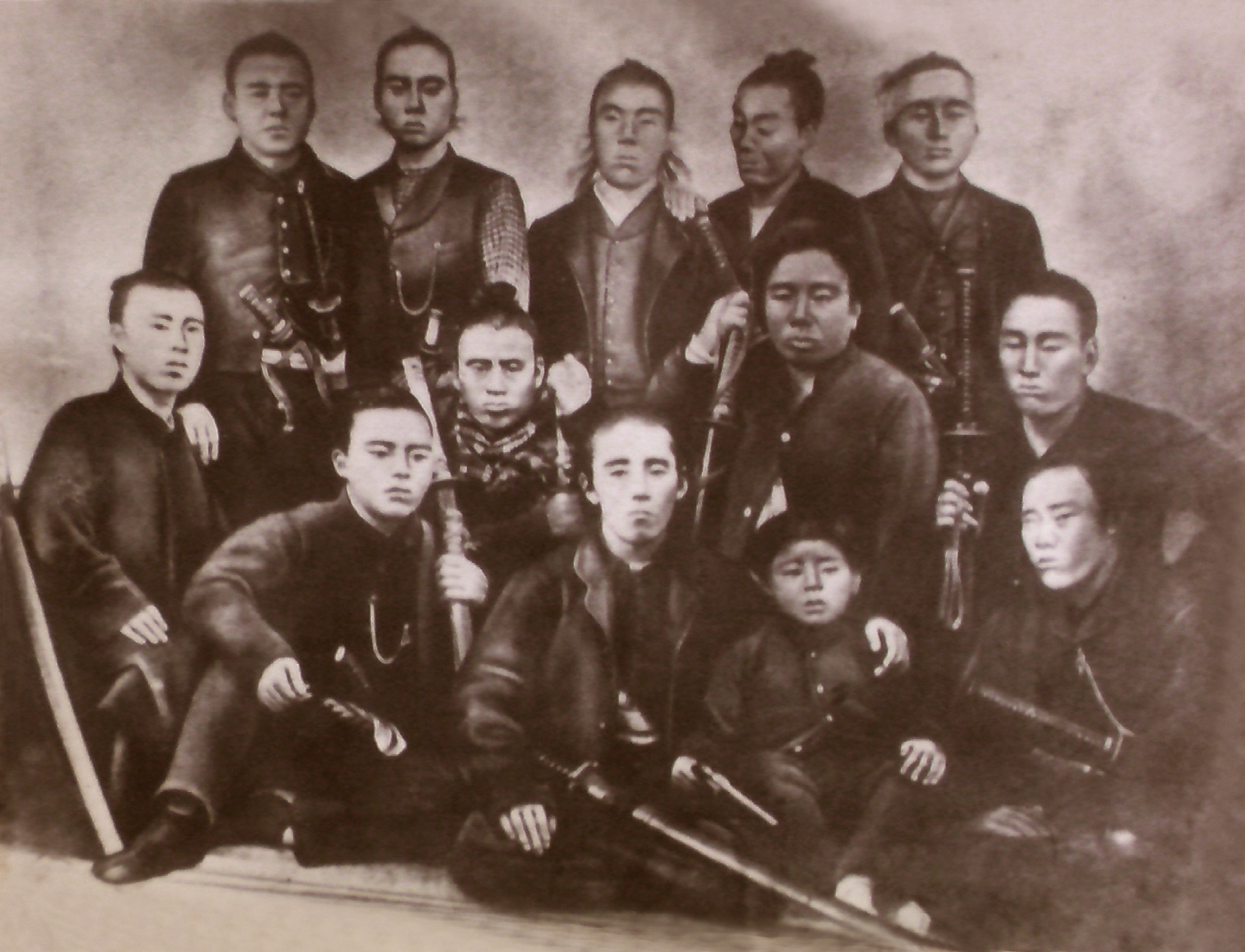|
Katsunuma 1
Katsunuma may refer to: *Battle of Kōshū-Katsunuma, battle between pro-Imperial and Tokugawa shogunate forces during the Boshin War in Japan *Katsunuma, Yamanashi, town located in Higashiyamanashi District, Yamanashi, Japan *Katsunuma Nobutomo (died 1535), Japanese samurai of the Sengoku period *Katsunuma-budōkyō Station, railway station of Chūō Main Line, East Japan Railway Company {{disambiguation, surname Japanese-language surnames ... [...More Info...] [...Related Items...] OR: [Wikipedia] [Google] [Baidu] |
Battle Of Kōshū-Katsunuma
The was a battle between pro-Imperial and Tokugawa shogunate forces during the Boshin War in Japan. The battle followed the Battle of Toba–Fushimi on 29 March 1868 (Gregorian calendar). Prelude After defeating the forces of the Tokugawa shogunate at the Battle of Toba–Fushimi, the Imperial forces (consisting of the feudal armies of Chōshū, Satsuma and Tosa domains) split into three columns, which progressed northeast towards the Tokugawa capital of Edo up each of the three main highways: Tōkaidō (road), Nakasendō and Hokurikudō. Meanwhile, Kondō Isami, leader of the ''Shinsengumi'', withdrew to Edo after the Battle of Toba–Fushimi. Once back in Edo, he met with Shogunal military commander Katsu Kaishū. Kondō created a new unit based on the surviving remnants of the ''Shinsengumi'', called the , and they departed Edo on 24 March. The battle The Imperial army reached the Tokugawa stronghold of Kōfu first, and occupied it with a struggle. The Imperial army the ... [...More Info...] [...Related Items...] OR: [Wikipedia] [Google] [Baidu] |
Katsunuma, Yamanashi
was a town in Higashiyamanashi District, Yamanashi Prefecture, Japan. As of 2003, the town had an estimated population of 9,271 and a density of 255.82 persons per km². The total area was 36.24 km². On November 1, 2005, Katsunuma, the city of Enzan, and the village of Yamato (also from Higashiyamanashi District), were merged to create the city of Kōshū. Katsunuma is also popular for white wines. See also * Japanese wine * Battle of Kōshū-Katsunuma The was a battle between pro-Imperial and Tokugawa shogunate forces during the Boshin War in Japan. The battle followed the Battle of Toba–Fushimi on 29 March 1868 (Gregorian calendar). Prelude After defeating the forces of the Tokugawa sho ... References External links Kōshū official website Dissolved municipalities of Yamanashi Prefecture 2005 disestablishments in Japan {{Yamanashi-geo-stub ... [...More Info...] [...Related Items...] OR: [Wikipedia] [Google] [Baidu] |
Katsunuma Nobutomo
was a Japanese samurai of the Sengoku period. The son of Takeda Nobutsuna, he was a high-ranking general who served the Takeda clan of Kai Province. As his landholding was in the Katsunuma region of Kai, he used the ''shō'' (姓) of "Katsunuma." According to the record ''Katsuyama-ki'' (勝山記), he was killed in action during a battle against the Hojo clan of Sagami. Following his death, the family was succeeded by Nobutomo's son Nobumoto. His oldest daughter was the military writer and poet Rikei was a Japanese noble lady, calligrapher, poet and scholar. She was the eldest daughter of Katsunuma Nobutomo (勝沼 信友), a samurai of the Sengoku period. She lived as a Buddhist nun at Daizen-ji temple at Mount Kashiwao and is most notable .... In the 2007 NHK drama "Fūrin Kazan," Nobutomo was played by Tsuji Kazunaga. References *''This content is derived from the corresponding article on the Japanese Wikipedia.'' External linksDiagrams of the Katsunuma residence an ... [...More Info...] [...Related Items...] OR: [Wikipedia] [Google] [Baidu] |
Katsunuma-budōkyō Station
is a railway station of the Chūō Main Line, East Japan Railway Company (JR East) in Katsunuma-Hishiyama, in the city of Kōshū, Yamanashi Prefecture, Japan. Lines Katsunuma-budōkyō Station is served by the Chūō Main Line, and is 112.5 kilometers from the terminus of the line at Tokyo Station. Station layout The station consists of one island platform. The station is staffed. Platforms History The station opened as on April 8, 1913 on the Japanese Government Railways (JGR) Chūō Main Line. The station had served as for one week, from April 1, before it started the passenger and freight services. The JGR became the JNR (Japanese National Railways) after the end of World War II. A new two-story station building was completed in October 1980. With the dissolution and privatization of the JNR on April 1, 1987, the station came under the control of the East Japan Railway Company. The station was named to its present name on April 1, 1993. Automated turnstiles us ... [...More Info...] [...Related Items...] OR: [Wikipedia] [Google] [Baidu] |

